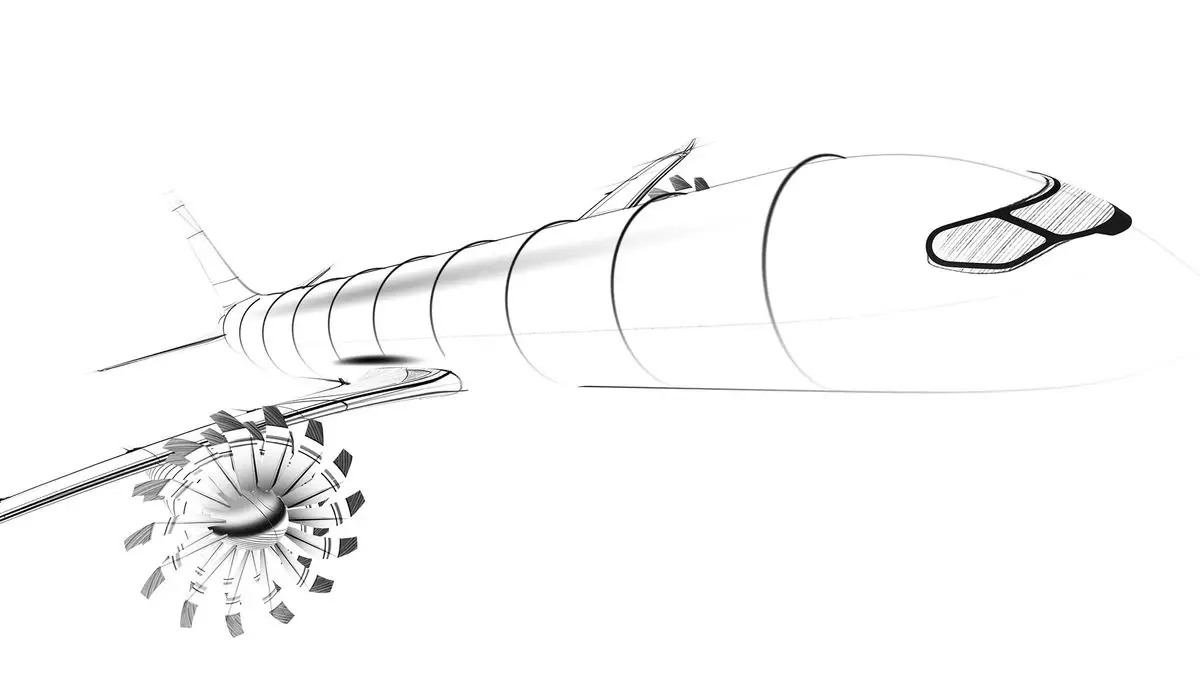The aviation industry stands at a crucial crossroads, with escalating environmental concerns thrusting sustainability into the spotlight. Airbus, a towering figure in aircraft manufacturing, is responding with a bold vision for a next-generation single-aisle aircraft. This innovative project aims to reduce fuel consumption by an impressive 20% to 30%—a goal that not only represents a technological leap but also a moral imperative for an industry under scrutiny for its carbon emissions. Scheduled for rollout in the latter half of the 2030s, this ambitious plan depends on groundbreaking advancements in engine technology, wing design, and the materials used in aircraft construction.
At a recent summit in Toulouse, France, Bruno Fichefeux, the head of future programs at Airbus, candidly remarked that the company is still in the nascent stages of development. To put it succinctly, he likened the current progress to having the ingredients but not yet the recipe for success. This frank acknowledgment of the challenges ahead underscores the complexity of the task at hand. It’s a reminder that while aspirations are high, the road to implementation is fraught with hurdles that demand both ingenuity and time.
Engine Innovations for Enhanced Performance
A pivotal component of Airbus’s vision involves rethinking propulsion systems. The company is exploring an open fan-propulsion system as a replacement for conventional turbofans. Such a design could potentially sidestep the drag limitations plaguing existing engines, which have reached maximum efficiency within their current configurations. This revolutionary approach aims to create more efficient, larger fans for a leap in performance.
Mohamed Ali, a senior vice president at CFM International, stresses that improving engine performance isn’t merely about increasing fan size; it’s about redefining the very framework through which engines are designed and built. With extensive testing already underway, Airbus plans to conduct its initial flight of an open fan-engine utilizing an A380 by the end of the decade, marking a crucial pivot in aviation technology.
Wings of Tomorrow: Embracing Aerodynamic Evolution
In tandem with engine advancements, the design of aircraft wings is also undergoing a transformative makeover. Airbus is pioneering a folding wing design that promises to enhance lift while minimizing drag. Sue Partridge, the head of Airbus’s Wing of Tomorrow program, draws an analogy to the graceful flight of an albatross, which effortlessly navigates air currents, to illustrate the aspirations for wing efficiency.
However, this innovative design is not without its complications. The infrastructure of airports around the globe is predominantly built for traditional wing shapes, limiting the scope of these designs. To bridge the gap between innovation and practicality, Airbus is constructing wing demonstrators to test the feasibility of a design that can alter its shape for various stages of flight. By allowing wings to fold for landing and takeoff, Airbus aims to tackle both the aerodynamic challenges and the engineering hurdles posed by existing airport facilities.
The Role of Hybrid-Electric Propulsion
Alongside its focus on engines and wings, Airbus is keenly exploring hybrid-electric propulsion as an added layer of sustainability. This technology aims to supplement conventional jet fuel with battery-powered capabilities to offset carbon emissions—a strategic move to reduce emissions by up to 5%. Though current plans do not include in-flight propulsion from batteries, the applicability for ground movement and in-cabin operations presents a pragmatic step toward greener aviation.
A successful demonstration flight, conducted in collaboration with aerospace innovators Safran and Daher, showcases the promise of hybrid-electric systems. Such initiatives signal a commitment not just to incremental changes, but to transformational ones that fundamentally change aircraft operations and promote a more sustainable future for air travel.
Confronting the Challenges Ahead
While Airbus’s vision is undeniably exciting, it is essential to acknowledge the myriad of challenges that lie ahead. Beyond technological advancements, regulatory barriers, industry collaboration, and significant financial investments will all play roles in determining the success of this ambitious venture. As the company continues to innovate, it must also engage with stakeholders across the aviation sector to cultivate a united front toward achieving the ultimate goal of net-zero emissions by 2050.
Airbus’s movement toward a sustainable future in aviation embodies the intersection of innovation, responsibility, and determination, placing the aerospace industry on the brink of possible revolution. With both the airframe and propulsion systems set for a radical overhaul, the industry may very well witness a new era defined by efficiency, reduced emissions, and a commitment to sustainability.


Leave a Reply